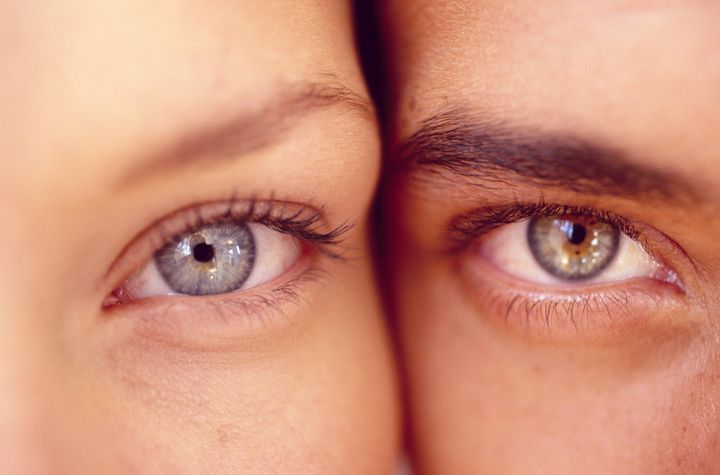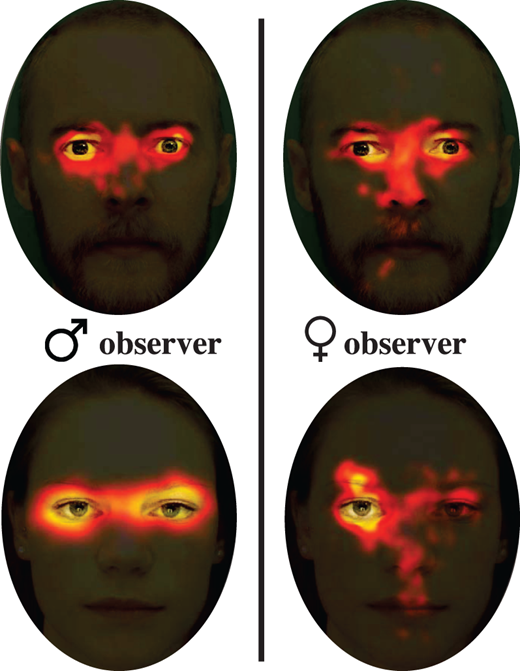
If you thought men and women tend to see things differently, you were right in a surprisingly literal sense.
As it turns out, this colloquial observation has a real basis in brain differences. New research finds that the sexes do take in the world differently, thanks to gendered discrepancies in way the brain absorbs visual information.
In a study published Monday in the Journal of Vision, biologists from Queen Mary University of London used an eye-tracking device to monitor how much eye contact men and women used when looking at an actor’s face on a video-chat screen. By observing the eye-scanning patterns, the researchers were able to predict the person’s sex with nearly 80 percent accuracy.
In three separate sessions of 15 minutes each, 405 participants gazed at the same male or female actor’s face. Analyzing the eye-scanning patterns, the researchers observed some striking differences between the male and female participants. The women looked more at the left side of the face and showed a strong bias toward the left eye, especially when gazing at a female face; they also explored the face more overall than men.

Left-eye preference also occurs in men, but to a lesser degree. This is because the right hemisphere of the brain (which corresponds to the left side of the body) is dominant for face processing, according to the researchers.
“Since the right hemisphere is fed by the left visual field, this could explain why people are biased toward the left when looking at faces,” Dr. Antoine Coutrot, a cognitive science researcher at the university and the study’s lead author, told The Huffington Post. “Then, why this bias is even stronger for women? The truth is we don’t really know yet.”
While scientists previously believed that all humans follow a universal pattern of face exploration, it’s now been demonstrated that each person has their own signature eye-scanning pattern, which is determined by factors including personality, culture, age, sex and neurological health.
The sex of both the participant and the actor being observed were the factors that most influenced gaze patterns during face exploration. However, it’s difficult to say whether those differences in eye-scanning patterns are innate or shaped by social norms. “The key message is that it is possible to use gaze patterns to extract many [pieces of] information about the observer,” Coutrot said.
Eye movements can tell us a lot about the brain. This information can be used for a number of purposes, including diagnosing conditions like autism and ADHD.
“A very promising line of studies is gaze-based disease screening,” Coutrot said. “Some disorders, like dementia or autism, lead to quantifiable alterations of eye movement behavior. Hence, gaze can be used as an objective, inexpensive and rapid tool for disease screening.”
